Alternative Comms In An Era Of Network Insecurity
Chinese SIM "farms", infrastructure failures, and hackers are all threatening our ability to stay connected...
By now we all know of the nationwide network of SIM card “farms” that have been discovered in the United States. These farms are a massive telecommunications threat, not only in New York City and New Jersey where they have been discovered, but to the entire nation, as they can cripple the nationwide cellphone system, emergency services and they even lead to the swatting of federal officials and political leaders.
This was an act of war by the CCP, more specifically China’s Ministry of State Security. Blaze Media has reported on this as well as The RAIR FOUNDATION. The risk to our critical infrastructure cannot be overemphasized, and it must be assumed that these “farms” exist in major cities throughout the United States. The risks to our country and our way of life are immense.
Assuming that they have discovered even a significant portion of them is unwise. These can be set up on huge racks in one location as in the image below, or in multiple locations, perhaps hundreds or even thousands of them, sitting silently until activated. The risk is huge, and is occupying a great deal of our own federal and state resources just in an effort to track these down. Another consideration is that China doesn’t just build hundreds of these devices, known as SIM banks or SIM gateways, each that can host hundreds of SIM cards in a single device. They build hundreds of thousands of them. They can be placed, and likely are, everywhere.
The purpose of this essay is not to rehash what others have written about extensively, other than to emphasize the dangerous nature of this threat and the catastrophic repercussions should our networks be systematically disabled, while other seemingly unrelated attacks take place at the same time. Rather, this is to emphasize and provide solutions for individuals who wish to keep their families safe, or as safe as possible, WHEN these attacks take place.
Preparedness takes a number of forms, including being able to provide food, water and shelter for your family in a crisis, medical support for injuries, and defense for attacks. It also means being able to communicate with your loved ones when they are NOT with you at your home or your bug-out location when conditions deteriorate. First of all, every family MUST have a rehearsed plan for what to do when communications fail. We’ll go over that in a moment. More importantly, every family must have a secondary way to communicate with each other, sometimes over distances. Each scenario is different, whether you have 2 miles to cover or 20 or more. Distances greater than about 45 or 50 miles would require a significant investment in time and resources, but certainly can be accomplished.
Family Plan
Having a plan to meet with your family in a crisis is paramount, especially when communications fail and chaos begins. It will happen much faster than anyone imagines. If the cell network(s) go down, people will be suitably confused, as nearly everyone relies on their smartphone for communications, news, getting directions and more. That is the time, before panic sets in, to make your decision to act. You have minutes, perhaps an hour, to make that decision… making certain you have a full tank of gas should be foremost in your mind at this time, and all good preppers keep their tanks full.
Thinking ahead, you can download offline maps onto your phone or tablet, because you’ll still be able to use it for getting around road blockages and get home even if the network fails. Most people use Google Maps, which now has an offline feature. Use it to save local maps to your phone for occasions such as this. Other services include maps.me and my favorite, OsmAnd. Your phone has built-in GPS capability and will work with your mapping software even if the networks are down. Learn to use it. You might want to do this today.
Additionally, keep paper maps in your vehicle appropriate to your location that show ALL of the streets… real estate agents used map books to find their way around… get one of these for each of your vehicles if you can find them… your local MLS office may have an idea or even some old ones in stock. The most important point is to have routes pre-set and a plan that everyone knows, and what conditions would call for implementing this plan. Situations like a total collapse of the cellular network, news of an attack, martial law, or even just a severe storm headed to your area. All of these are suitable reasons to make the decision to regroup with your family. What to do after that is for you to decide, whether it’s to shelter in place, or bug out to a second home or the home of a relative in a rural area. Even a sudden lack of news can be an important clue.
Quick thinking can save your life. Educating your family, especially your kids, about the need to recognize problems and act quickly is your number one priority. If you have a husband or wife who is resistant to “prepping” or considering these things, approach it with compassion… most resistance is borne of fear, not contempt or disbelief. Show them the news stories about the fragility of our infrastructure. Most people will be receptive if they have a role in both the planning and execution of whatever emergency plan you think is appropriate for your specific location and conditions. Encourage them to participate in the ideas, and give them important roles in the survival of your family.
Communications
Now to the issue that most people neglect, but should not. Cell phone use has become ubiquitous, and for many, a necessary and even life-saving part of their lives. You know what happens if you leave for the store, or work, and you forgot your phone on the dresser. You arrive late, having had to turn around and return home because you simply couldn’t afford to be without it. Our cell phone has become very much like electricity in our daily needs… essential. What if you suddenly didn’t have it? What would you do, after you panic, of course?
As an example, let’s say you use your phone to pay for gas. If the network goes down, do you have enough cash in your wallet to fill your tank and get to your destination? This is something to think about, because if the cell network goes down, it is quite probable that credit card payment systems will also fail. Without it, cash is the only way you will be able to fill your tank. Supplies like food and water, in case you have to bug out? Relying on your phone may not be such a good idea. Always have alternatives, such as a card or preferably some cash, just in case.
Do you use your phone to map out your route? We discussed that above… same applies. Download offline maps to your phone at the very least, and obtain paper maps of your city, as well as your state.
Do you use your phone to get your news? Of course you do. Everyone does. Do you even know how to use the radio in your car? Do you have local stations programmed in it? Twenty years ago that would be a stupid question, but not anymore. Pre-program a couple of news stations.
And, of course you use it to call home, friends, your kids, everyone. What if you can’t call? Will someone worry? Can you stop at a pay phone? Oh wait, what’s a pay phone, you ask? Have you even seen one of those recently?
So, what’s your solution? Smoke signals?
Well, not in most cases, but there are excellent alternatives. Two-way radios are common, easy to find and install, and many operate in the unlicensed bands (meaning you do not have to pay a fee or pass a test to use them). Here are some of your choices.
CB Radio
CB, or Citizens Band, is the oldest and most well-known, at least among the Baby Boomers and Generation X. Many people still use CB radios today, including nearly all over-the-road truck drivers, as well as hobbyists. A standard CB radio has 40 channels, which provides plenty of options for talking to your family and friends. Range varies considerably with these radios, and a good antenna is a must for reliable communication. First, CB radios are limited by law to 4 watts of power on the AM band, and 12 watts on single sideband. AM is typically good for a few miles vehicle to vehicle, greater distance home to vehicle, and even greater home to home. Single Sideband, or SSB, which some CB radios have built-in, allows for greater range, sometimes up to 20 or 30 miles depending on terrain, etc. Having a conversation with someone across town is not uncommon depending on conditions, especially when utilizing single sideband, which this author highly recommends for emergency comms. Occasionally, especially during what’s known as sunspot maximum, which as of this writing we are currently in, signals from CB radios can bounce off the ionosphere and you can hear people several hundred to several thousand miles away. When this happens, local communications will be affected as the bands become quite noisy. With a suitable antenna, you can easily make contact with people across the country and sometimes as far south as Argentina during these times.
Some excellent radios to consider are the Uniden Bearcat 980, which has 40 channels plus SSB, as well as NOAA Weather, the President McKinley which also has AM and SSB plus weather, and the President George which has AM, SSB and FM operation plus privacy codes to reduce interference. This would be, in this author’s opinion, the easiest, and likely the best option for immediately having access between your home and your family members. A good setup in your home would include one of the above radios, generally under $300, a power supply to power the radio $60-$100, and a quality base station antenna, which can be anywhere from $80 to $400 or more, but $100 will do very well. Read up a little on this, especially since some neighborhood covenants frown on external antennas... an antenna in your attic can work quite well. For a vehicle, same setup, except you won’t need a power supply, as your vehicle battery will serve as that, and a mobile antenna, typically a magnet mount like the Wilson 1000, generally under $100. All three of the radios mentioned above include built-in SWR meters so you can properly tune the antennas (this is a simple process and only takes a few minutes).
Install these radios, and practice using them. There are several ways to install a radio in your vehicle… under the dash, using a specialized mount to the center console, even overhead… there are hundreds of installation videos available. The most important thing is that it’s visible, but doesn’t obstruct your view or cause distraction while you drive. Test them out, see what kind of range you can get with them, and have a plan for communicating with your family when the time arises… select a channel, AM or or preferably upper or lower sideband (channels 35-39 are usually the best choices) and a plan to coordinate a location to have everyone meet, whether it’s your home or a different location. Choose this location carefully, and use code words to obscure your destination so you don’t have unwanted visitors. as CB transmissions are not encrypted. Also, part of OPSEC is to keep transmissions very short, especially from the home location, as this will make it more difficult for unwanted operators to zero in on your location. This is important. We used to practice how quickly we could find another radio operator back in the day (this was called a fox hunt) and generally we could do it in less than 20 minutes. The longer you talk, the easier it becomes.
MURS, GMRS and FRS Radios
These radios operate in the VHF and UHF bands respectively, and the MURS, or Multi Use Radio Service (VHF) and FRS, or Family Radio Service (UHF) do not require any type of licensing. GMRS, or General Mobile Radio Service radios do. The have reasonable distance if there are no obstructions, but don’t assume more than a few miles from handheld radios (think walkie-talkies), no matter what the packaging says. You might get close to 10 mile range if you are talking across a lake with no boats in the way, or between two mountain tops, but otherwise expect less than a mile, especially in the wilderness or around buildings. MURS radios, which operate in the VHF band, are limited to 2 watts of power. GMRS radios, which require an FCC license ($35 which covers the user and all immediate family members) can operate up to 50 watts on select frequencies (you will want to familiarize yourself with these), and with a proper setup with a base station and hard-mounted vehicle radio you can expect 10 miles, and perhaps a good bit more depending on terrain. These are a good alternative to CB radios which are limited to 4 watts AM and 12 watts sideband. An excellent GMRS radio would be the Radioddity DB20, with a power output of 20 watts for less than $100, or the Btech GMRS-50V2 with 50 watts of power for about $220. Both of these are available on Amazon.
Amateur Radio
When I was much younger, I got interested in CB radio because we were about to take a road trip, and that eventually let to my lifelong interest in Amateur Radio. With CB radio I could talk to my wife from several miles away. With amateur radio, although my wife was not licensed at that time to speak on amateur radio frequencies, our local club had a repeater that had what was known as an autopatch. This allowed for operators to make phone calls from their radio and I was able to call home, check in, and see if anything was needed. The autopatch is much less common now, but some repeaters still have this feature. Having said that, amateur radios are a wonderful, and reliable way to communicate with friends and family members.
There is a fee to become an amateur radio operator, which is not much… approximately $50, there is material to learn and you have to pass a test, or tests, depending on the level of license you are seeking. There are currently three levels of amateur radio licenses… Technician Class, which allows full privileges on all bands above 50MHz, commonly known as VHF and UHF bands, plus voice on part of the HF band known as 10 meters (this is adjacent to the CB band), General Class, which allows access on all of the above plus more of the 10 meter band as well as most of the lower HF bands, otherwise known as the worldwide bands, and the Extra Class, which provides access to ALL of the amateur radio bands. This author has a General Class license and has worked the 10 meter band extensively over the years.
What does this do for you in terms of communicating with your family? Well, first of all, everyone you wish to communicate with will need to become licensed. This entails learning the material to pass the test. Here’s a good resource to get started, and a simple online search will answer nearly all of your questions: https://hamradioprep.com/how-to-get-your-ham-radio-license-made-easy/.
Once everyone is licensed, you can utilize any number of frequencies, depending on where you live and what kind of range you need. One great advantage of amateur radio is access to repeaters, which can allow you to theoretically communicate over hundreds of miles. This is important if a family member travels, or their work is a fair hike away. An example is a repeater in Atlanta, Georgia can receive the signal of someone in Chattanooga, Tennessee and re-transmit that signal to someone in Macon, GA, or even Columbus. None of the other systems above have that capability.
This is easily accomplished with VHF radios, in the 144-148MHz band. There are many different brands of these radios available, and quite a few that are considered dual-band radios and even tri-band radios which also have frequency capabilities in the 220MHz and 440MHz band. These can be had for about $280, plus another $100 for a good antenna.
Some HF (High Frequency - generally 3-30MHz) radios can communicate over hundreds to thousands of miles without repeaters, but be prepared for a larger investment, as mobile radios that have this capability typically cost $600 to over $1,000, and the antenna systems are large and can be cumbersome. So, if money and passing a test is no object, this is by far your best alternative to keeping lines of communication open with family and friends if the cell networks are disabled. Indeed, amateur radio operators have saved countless thousands of lives by providing communication when all other forms were unavailable or destroyed due to natural disasters.
Another nice feature of amateur radio is many of the rigs also receive (not transmit) in the shortwave bands, so in times of serious crisis, you can pick up stations around the world to find out what’s going on, even if you can’t get news locally or you are worried that the news you are receiving may not accurately reflect actual conditions on the ground.
There are some excellent options you can explore to be sure you are able to communicate with your family if the cell networks go down. Is this a likely scenario? Who knows. Having said this, two-way radios can be an enjoyable hobby, they can allow you to communicate with and help others in an emergency, and can be a lifeline if you find yourself stranded in an area with little or no cellular coverage. Do you take road trips? Consider a good CB radio. In an area with modest terrain? GMRS and MURS are possibilities. Want worldwide coverage? Amateur radio is definitely the way to go. It just depends on your needs, your budget, and your interests. What is most important is that you seriously consider having backup comms… as they say in the prepper community, two is one and one is none.


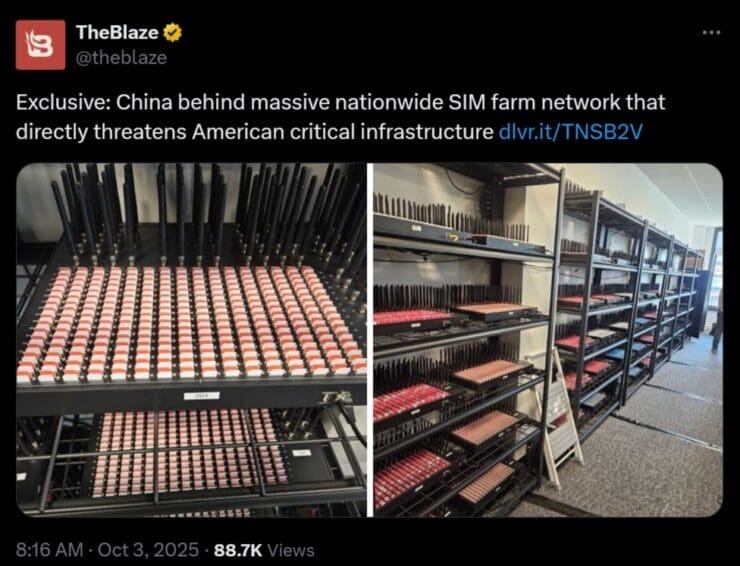
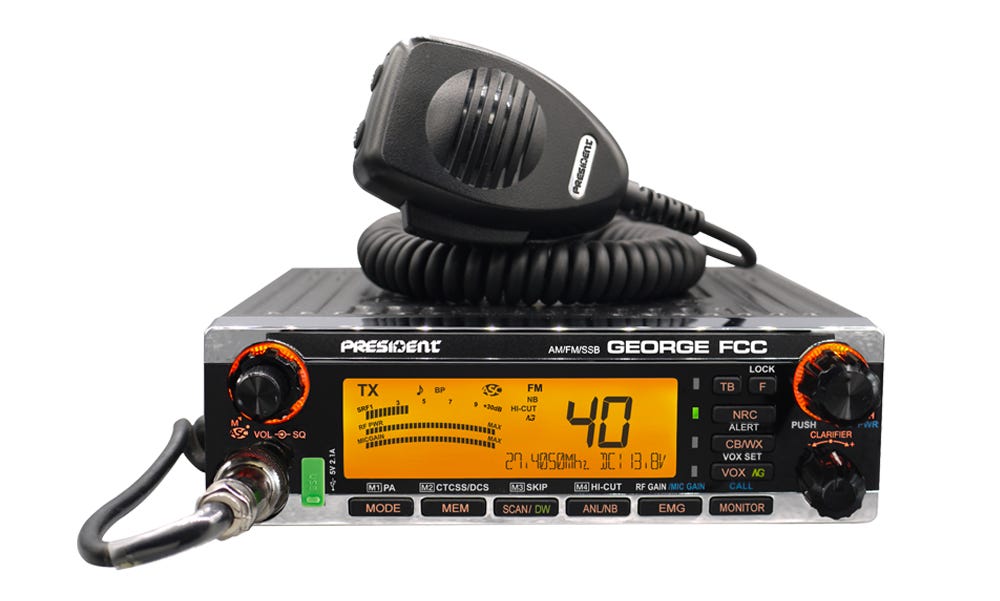
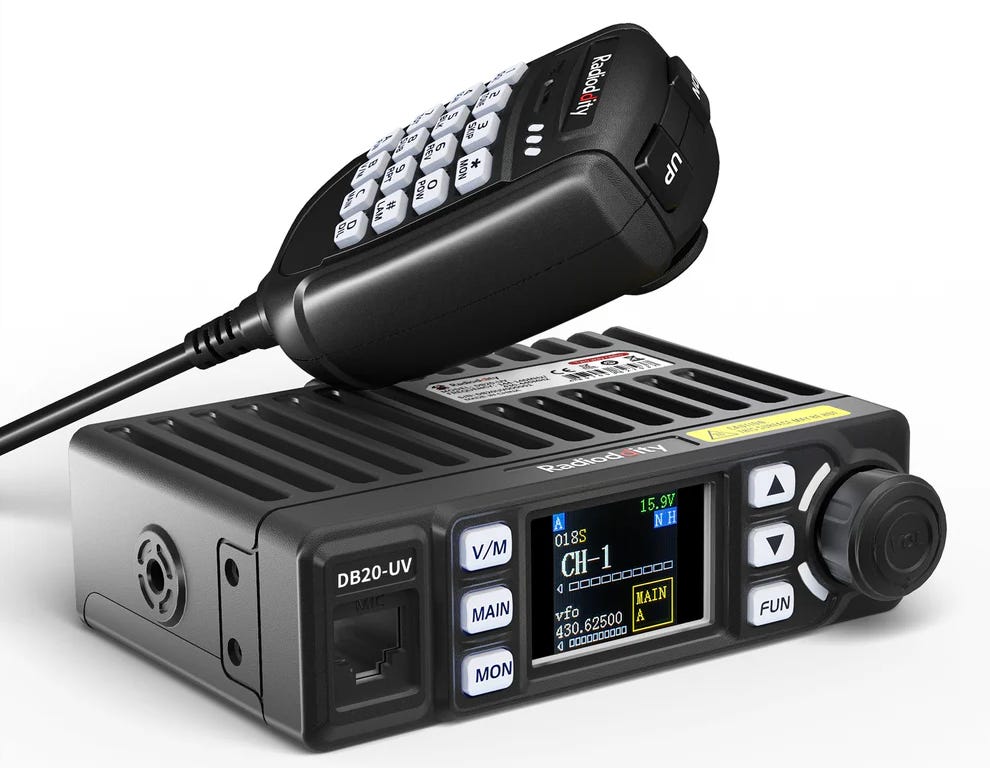
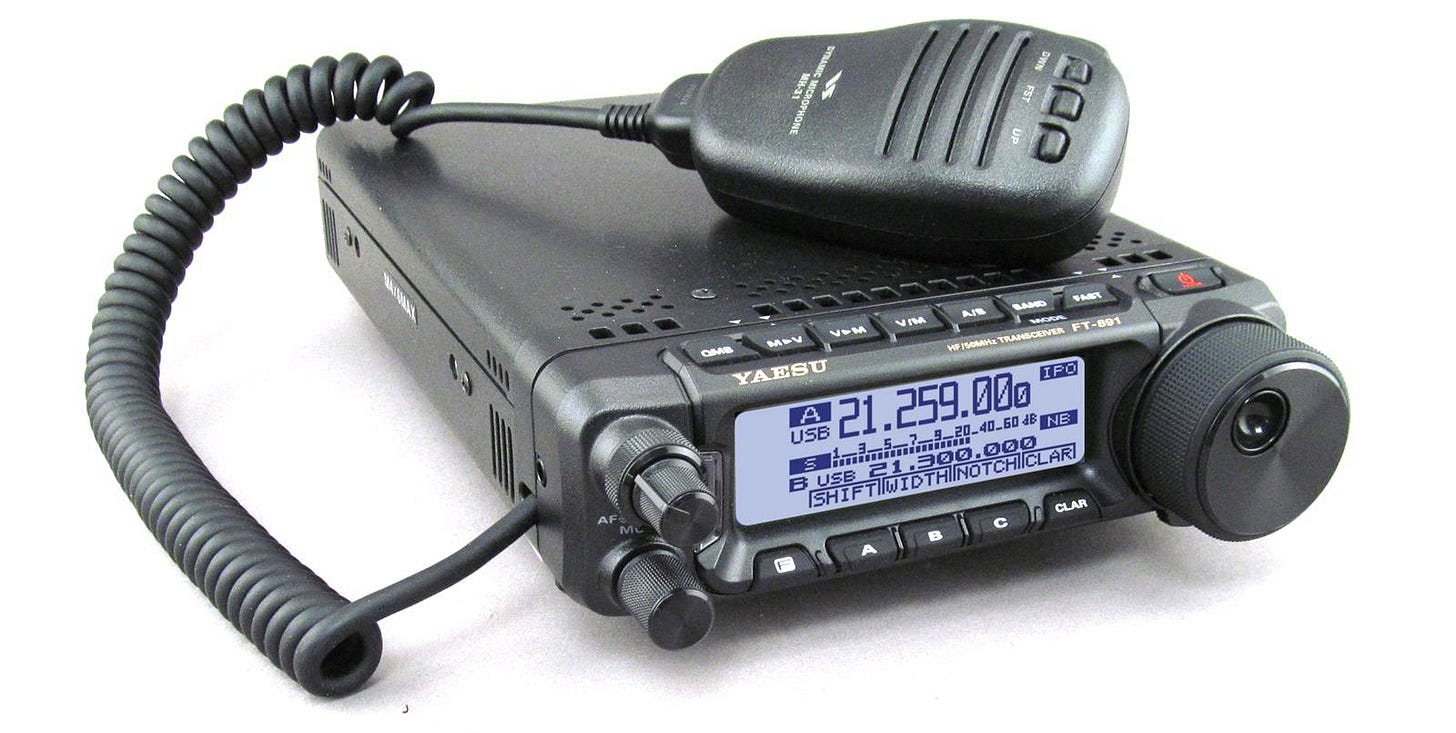
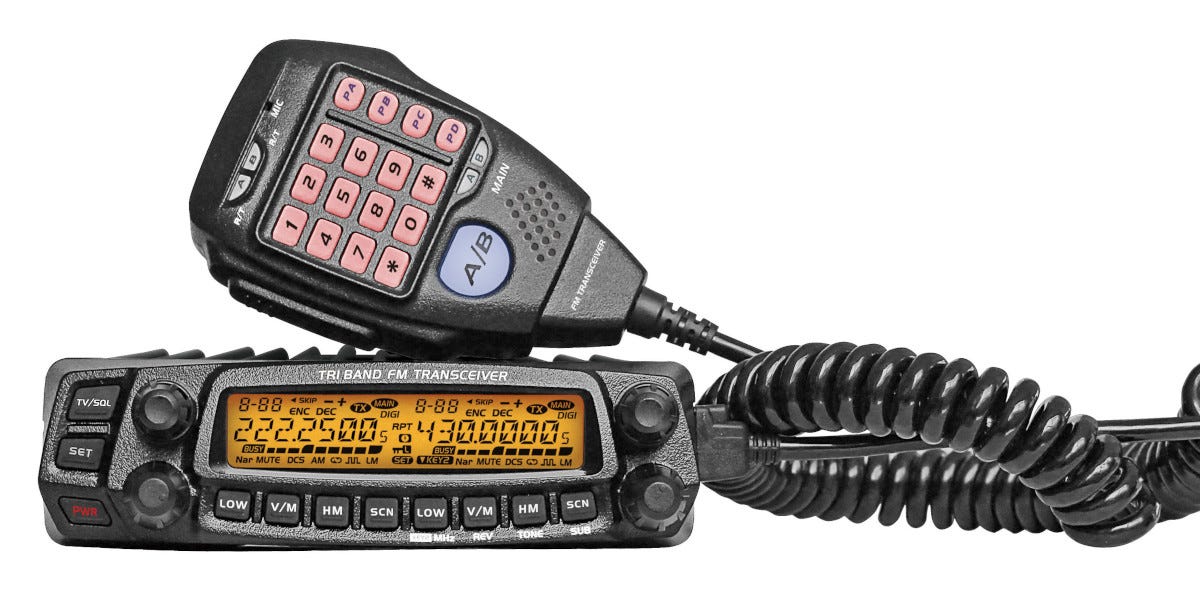
Or we can create high trust invite only networks that not even the Chinese firewall can stop. Like Eve for example
https://open.substack.com/pub/joshketry/p/introducing-a-new-ultra-high-trust?r=7oa9d&utm_medium=ios